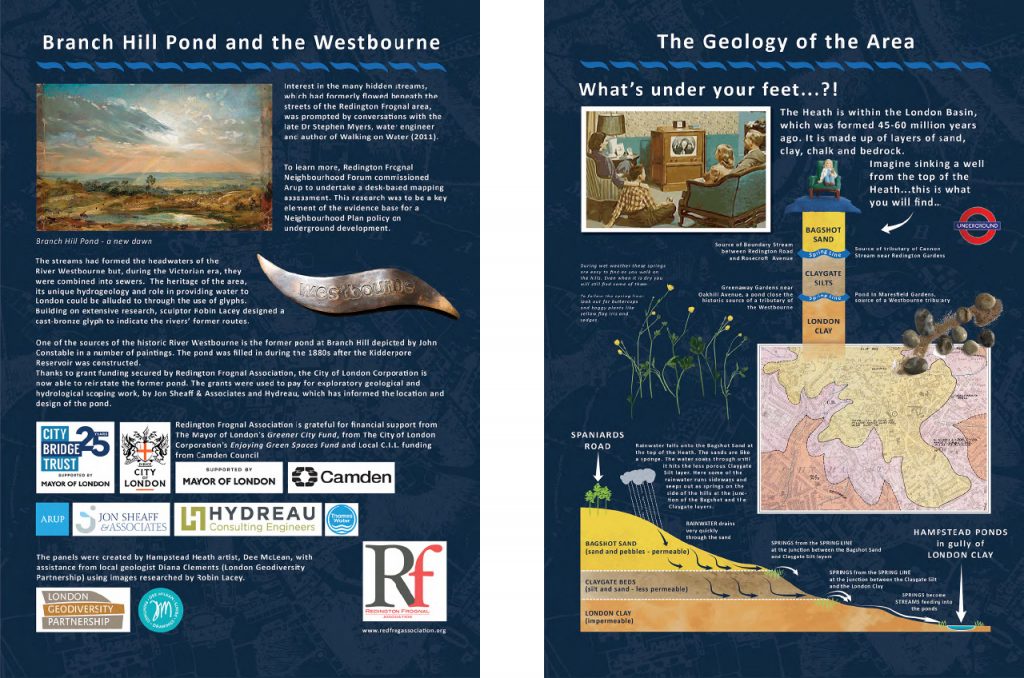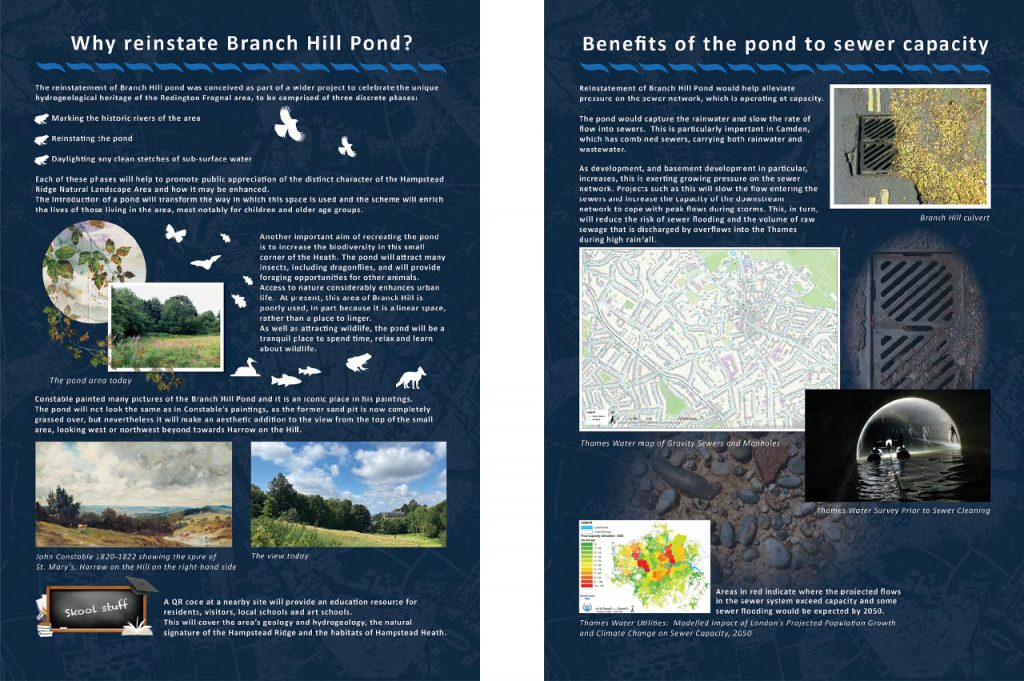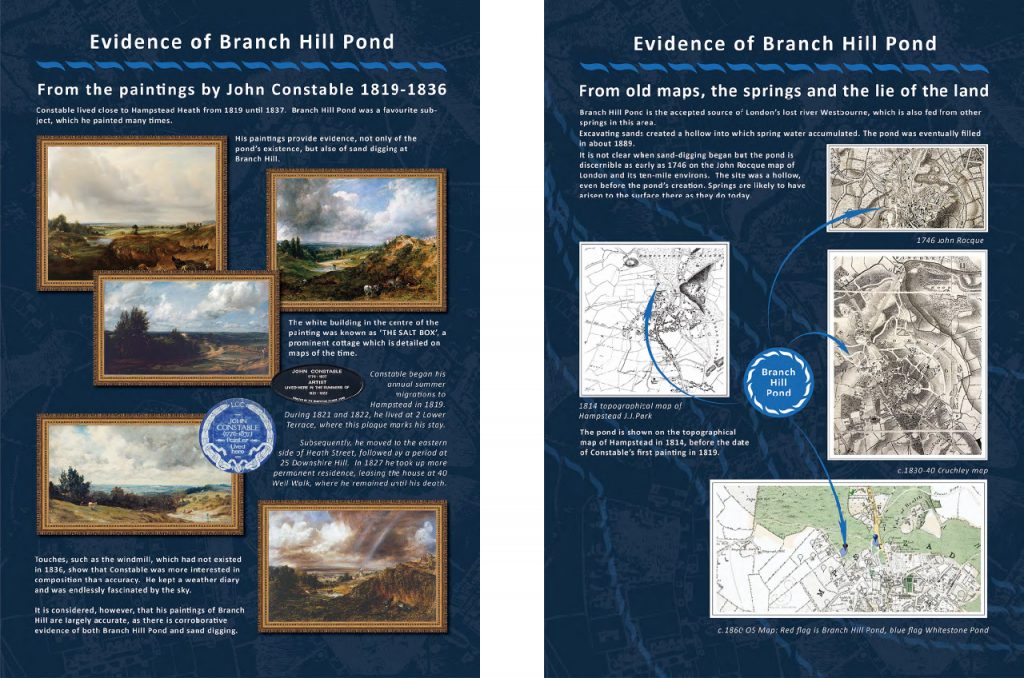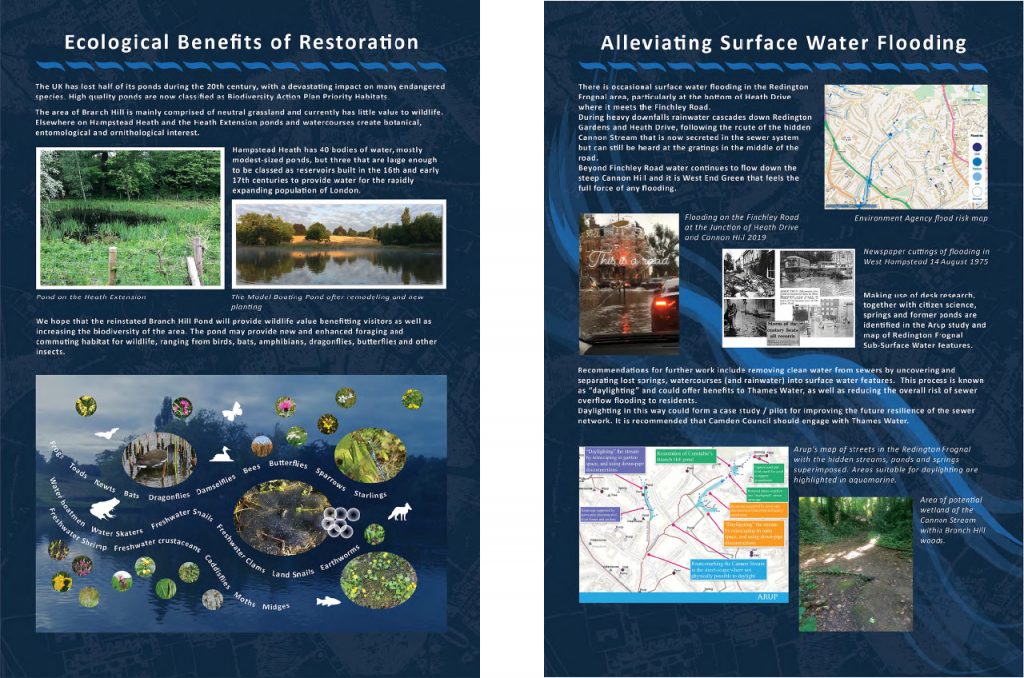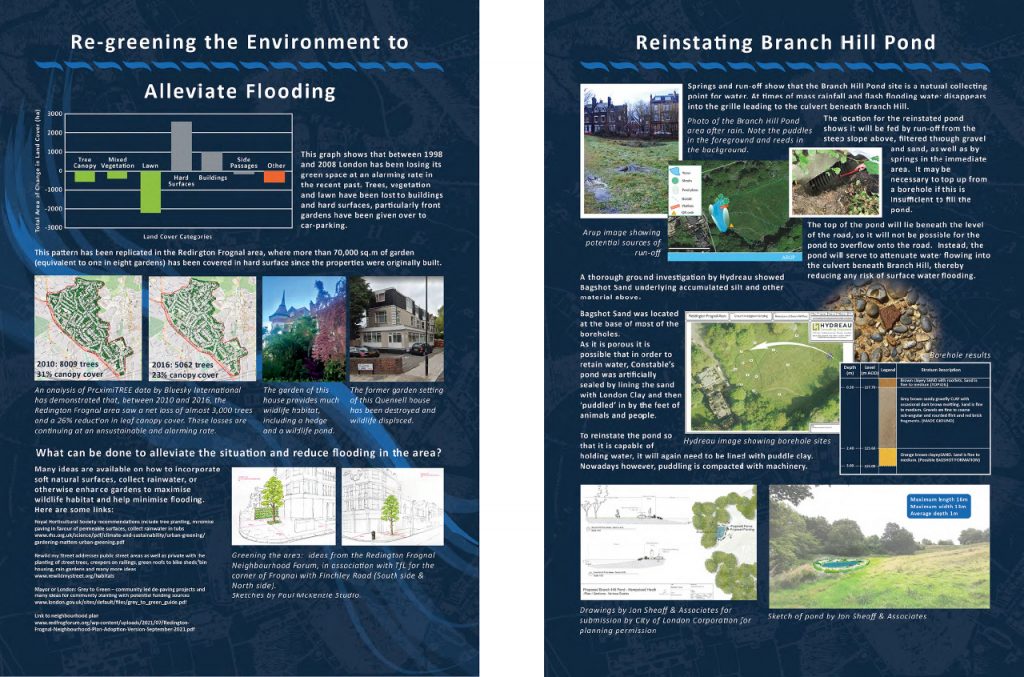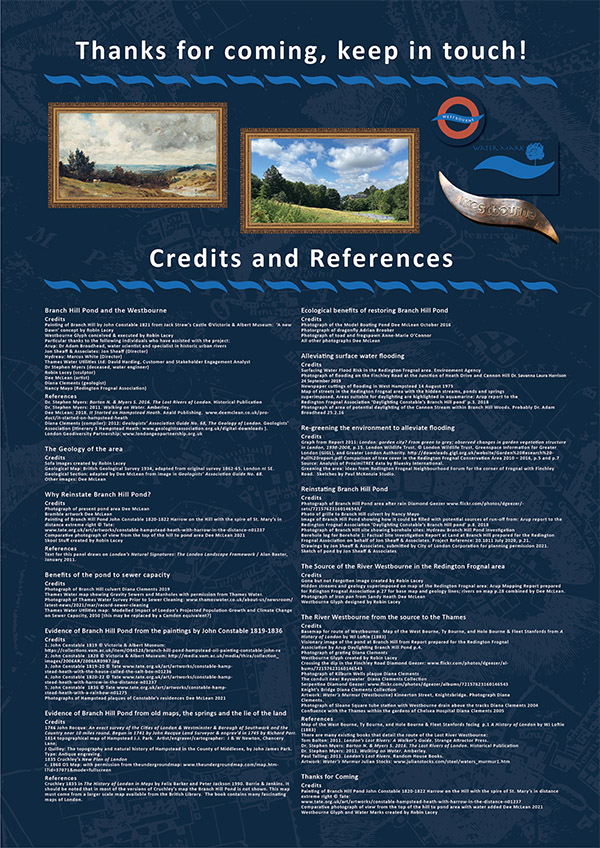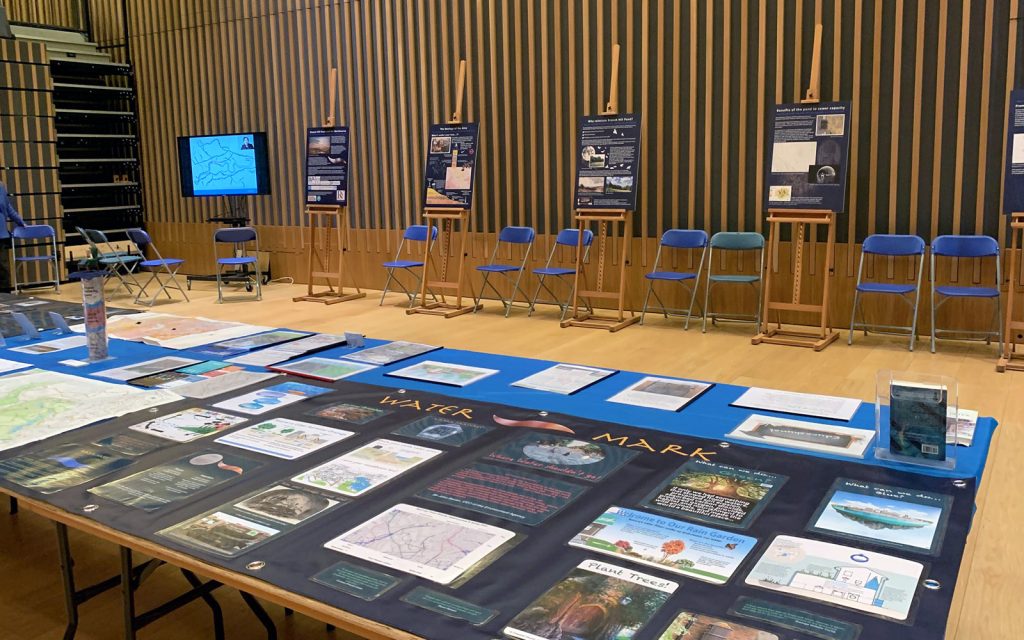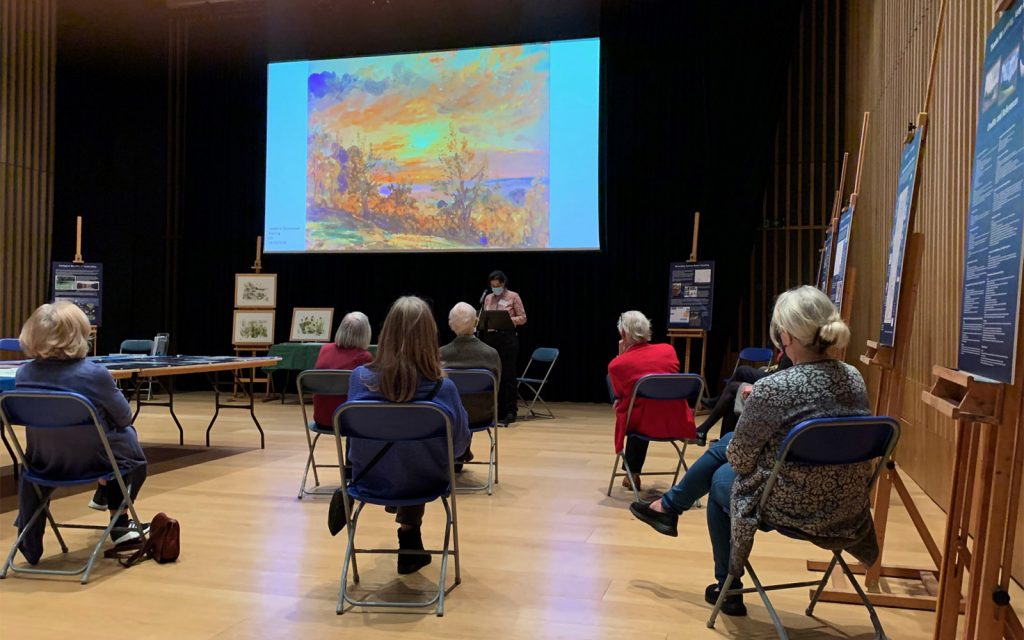Branch Hill Pond Restoration – Exhibitions
RedFrog Association has held exhibitions to provide information on the history of Branch Hill, the area’s geology, the historic River Westbourne and the connection with John Constable. Material for the exhibitions were developed by geologist, Diana Clements, and artist, Dee McLean. Supplementary input and resources, researched and compiled by Robin Lacey, formed an integral part of the exhibitions, displayed alongside the storyboards.
Reinstating the Pond After 100 Years
Following completion of ground investigations, RedFrog developed exhibition material to explain the reasons behind the reinstatement of Branch Hill Pond. Exhibitions were held over a week-long period at JW3 and Burgh House at the beginning of February 2022. The exhibitions were publicised throughout the Branch Hill and RedFrog areas with the aid of: 2,500 hand-delivered flyers, 150 lamp post notices, publicity by Burgh House, the RedFrog email database, WhatsApp group and Twitter account.
The exhibitions delved into the geology and hydrogeology of Hampstead / Redington Frognal and described the exploratory work undertaken in preparation for the pond’s reinstatement. Opportunities to reduce surface water flooding and promote biodiversity were also addressed. The exhibitions were enriched by talks and presentations from: The Mayor of Camden, Cllr. Sabrina Francis; Arup; City of London Corporation and John Constable specialist, Estelle Lovatt.
This publicity attracted coverage in the Evening Standard, Ham & High,Camden New Journal and the Camden History Society.
https://www.standard.co.uk/news/londoners-diary/john-constable-hampstead-pond-restoration-b981576.html
The Camden History Society newsletter is available here:
Camden History Society newsletter, March 2022
The following content is taken from exhibition materials produced for the Branch Hill Pond project, February 2022:
Branch Hill Pond and the Westbourne
Interest in the many hidden streams, which had formerly flowed beneath the streets of the Redington Frognal area, was prompted by c onversations with the late Dr Stephen Myers, water engineer and author of Walking on Water (2011).
The Geology of the Area
The Heath is within the London Basin, which was formed 45-60 million years ago. It is made up of layers of sand, clay, chalk and bedrock.
Why reinstate Branch Hill Pond?
The reinstatement of Branch Hill pond was conceived as part of a wider project to celebrate the unique hydrogeological heritage of the Redington Frognal area, to be comprised of three discrete phases:
- Marking the historic rivers of the area
- Reinstating the pond
- Daylighting any clean stretches of sub-surface water
Benefits of the pond to sewer capacity
Reinstatement of Branch Hill Pond would help alleviate pressure on the sewer network, which is operating at capacity. The pond would capture the rainwater and slow the rate of flow into sewers. This is particularly important in Camden, which has combined sewers, carrying both rainwater and wastewater.
Ecological Benefits of Restoration
We hope that the reinstated Branch Hill Pond will provide wildlife value benefitting visitors as well as increasing the biodiversity of the area. The pond ma y provide new and enhanced foraging and commuting habitat for wildlife, ranging from birds, bats, amphibians, dragonflies, butterflies and other insects.
Attenuating Surface Water Flooding
There is occasional surface-water flooding after heavy rains, in part following the now hidden Cannon Stream down towards Finchley Road. Using research and citizen science, springs and former ponds have been identified in an Arup study and map. Recommendations include removing clean water from sewers through a process of ‘daylighting’. More on this is available on Underground Rivers here.
Re-greening the environment
Many ideas are available to help incorporate soft natural surfaces, collect rainwater or otherwise enhance gardens to help minimise flooding and maximise wildlife habitat:
https://www.rhs.org.uk/science/gardening-in-a-changing-world/front-garden-research/rhs-projects-on-urban-greening
https://www.rewildmystreet.org/
https://www.london.gov.uk/what-we-do/environment/parks-green-spaces-and-biodiversity/urban-greening
Reinstating Branch Hill Pond
The site of Branch Hill Pond is a natural collection point water, fed by run-off from the steep slopes above, filtered through gravel and sand as well as local springs. the pond will serve to attenuate water flowing into the culvert, helping reduce any risk of surface-water flooding.
The source of the River Westbourne
There are many historic routes of water courses in the Red Frog area, including the source of the River Westbourne, as shown on map produced by Arup shown below. it is proposed to celebrate these features by embedding glyphs into the pavement at selected locations.
Thank you to all the supporters
Past exhibitions:
RedFrog Association has held exhibitions to provide information on the history of Branch Hill, the area’s geology, the historic River Westbourne and the connection with John Constable. Materials for the exhibitions were developed by geologist, Diana Clements, and artist, Dee McLean.
______
Burgh House, Peggy Jay Gallery
https://www.burghhouse.org.uk/whats-on/exhibitions/branch-hill-pond-and-the-river-westbourne-
Wednesday 9th to Friday 11th February (10 am until 4 pm)
This event has now closed.
- Sunday 13th February (10 am until 4 pm). Estelle Lovatt, FRSA , Art Critic, Writer, Lecturer & Broadcaster will speak at 3 pm
______
JW3
Sunday 6th February (2 pm until 6 pm).
Estelle Lovatt, FRSA , Art Critic, Writer, Lecturer & Broadcaster will speak at 4 pm
JW3 requires proof of vaccinations and mask wearing. This event has now closed.
